In Syria, as bombs continue to fall in that country’s seven-year civil war and descent into hell, there’s a man in a cave, working his ass off to try to cobble together on-the-fly fixes to broken medical equipment. Sometimes he succeeds, and sometimes he’s stumped by stupid problems–like not being able to find a service person willing to come and update the firmware on a two-year-old ultrasound machine that’s otherwise in great shape.
Usamah–it’s best not to use his full name, for obvious reasons, given that he’s MacGyvering solutions on behalf of suffering people on the receiving end of relentless attacks by the brutal Assad regime–is Our Man in Syria for Field Ready, a San Francisco-based nonprofit that aims to come up with novel, inexpensive, and practical solutions to really dire problems on the ground in war and natural disaster zones.
Field Ready was founded by Dara Dotz, an expert in 3D printing with a history of humanitarian work in places like Haiti, and Eric James, a veteran of two decades of leading disaster relief around the world. To date, the nonprofit has done work in 17 to 19 countries–“it just depends on how many islands you want to count,” Dotz says–including places like Nepal, South Sudan, Jordan, Turkey, Iran, Iraq, East Timor, Haiti, and Colombia.
There’s nothing that Dotz is more proud of than the organization’s work in Syria. For example, Usamah has come up with an ingenious system for repurposing car parts like old airbags in order to build inexpensive kits capable of saving people trapped under the rubble that inevitably follows airstrikes. So far, the kits have been used to save at least 25 lives.
Dotz got her start as an industrial designer with a focus on low-cost dependable products “for the other 90% of the planet.” Working and studying in 37 countries, she underwent a life-changing experience when she went to Haiti in 2012, two years after that country’s devastating earthquake. She had assumed that by that point, things would be largely back to normal; instead, she found hospitals still missing walls. She’d planned to stay for a few days, but ended up staying eight months working to confront common problems like that of a broken 3¢ piece of plastic keeping an entire well out of commission.
Watching a friend deliver HIV-infected women’s babies bare-handed because she had used her last sterile glove, Dotz decided it was crazy for humanitarian workers in Haiti to have to wait months for supplies to be “muled” in. “That flipped a switch in my brain,” she says. “I was like, Does anyone have an old 3D printer? We could 3D-print . . . clamps, [which are] 5¢ pieces of plastic, print them here instead of waiting for someone to bring them down.”
Next thing she knew, she was learning 3D printing in a shipping container, working on someone’s MakerBot. When she met James, who’d also come to Haiti to do earthquake relief, the seeds of Field Ready were sewn.
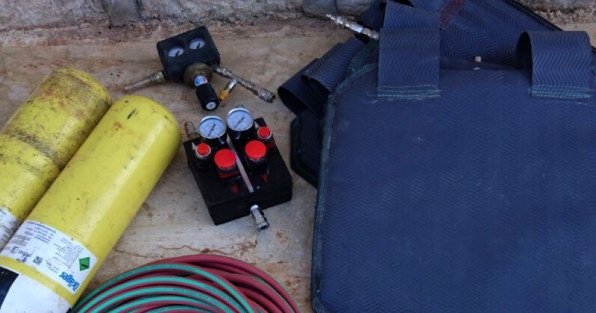
A lab in Syria
Field Ready’s work in Syria began a couple of years ago, starting out with helping first responders who needed help with tools and with finding electrical power.
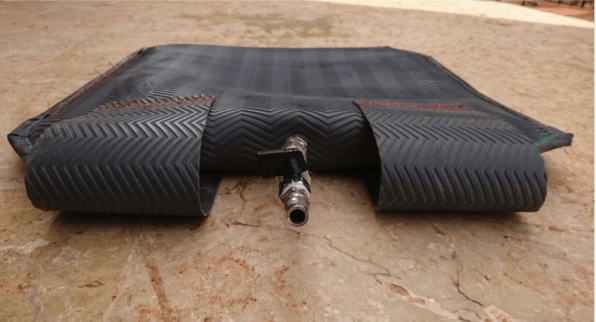
The project to build inexpensive kits capable of saving people trapped under rubble was inspired by a grim reality: First responders were rushing into areas where they saw planes circling, because they knew there would soon be bombs. As a result, Dotz says, the Assad regime was targeting the emergency personnel. Either way, there was sure to be a lot of rubble and desperate people stuck underneath it, many of them doomed by the fact that there’s no easy way to lift all that masonry and twisted rebar even three inches to pull someone to safety.
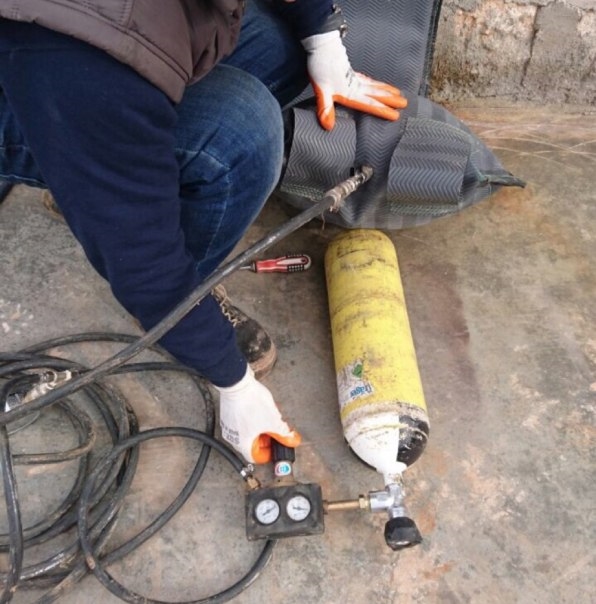
As Field Ready ramped up its work in Syria, it leaned on Usamah. Dotz, who travels more than any 20 normal people, has not yet visited the country herself. But the need for a solution to the rubble problem led to what she calls an “Apollo 13 moment”–WhatsApp and Skype calls with Dotz and others outside Syria talking to people on the ground in Syria as they “took [a bunch] of ingredients and dumped them on a table” in search of a way to build something they could use to rescue those trapped after a bombing.
It wasn’t easy. The project took four months of sifting through potential parts from burned-out cars and army vehicles–things like inner tubes, airbags, and even oxygen tanks from EMT kits. The result was an pneumatic air-bladder system capable of lifting as much as nine tons. An equivalent system in Turkey would cost about $5,000, Dotz says, but the Field Ready folks were able to engineer it for a fraction of that cost. Training someone to build one cost about $500, she says, and each new system costs just $50 in parts. There are now 200 units and counting in use in Syria.
Cave hospital
Dotz rarely gets to talk to Usamah. Internet connectivity is hard to come by in Syria, and, anyway, he’s busy trying to save lives. One day earlier this week, I was able to speak to him thanks to a cell-phone signal coming across Syria’s nearby northwest border with Turkey. “We feel proud,” Usamah tells me, “every time [Syria Civil Defense, known as the White Helmets] call us and tells us they’ve [saved] one or two people.”
In the meantime, Usamah spends a lot of his time working in a hospital he’s helped build in a cave in Southern Syria–a facility that aims to protect patients from new airstrikes. Among its many challenges is trying to figure out how to bring in steady power.
Another is keeping the hospital’s Dermajets–tools useful for delivering therapy to burn victims–up and running. The problem, Usamah says, is that the Dermajets’ seals were having to be replaced as often as twice every time doctors did a procedure.
So Usamah and his team fashioned stronger threads for the seals, and supplied a new kind of spring that couldn’t otherwise be found locally, and they’ve been able to triple the number of patients treated per day.
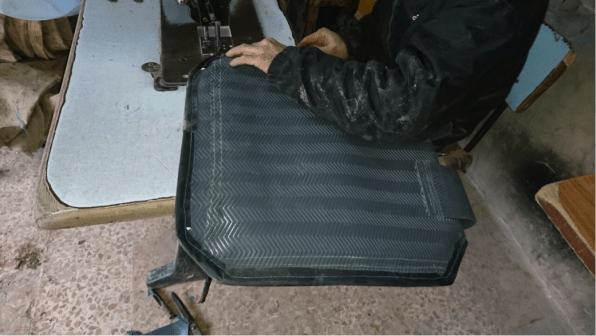
Still, the problems Syrians face are innumerable. Along with issues such as updating ultrasound-equipment software, medical providers must deal with issues such broken-down X-ray machines, and the lack of reliable power means that it’s hard to do things like make braces for broken bones.
Yet in spite of all that, Usamah has also spearheaded an effort to help local families start hydroponic farming. With water at a premium–just 5% of what’s needed is actually available, he says–it’s been hard to grow much, yet Field Ready has started building and distributing hyper-efficient hydroponics kits that can feed two or three families each.
“We work with the people themselves”
Field Ready team members like Usamah may be clever, but they couldn’t be useful on an ongoing basis without understanding the kinds of problems locals are having.
“We work with the people themselves,” Dotz says, and “ask what they need. Then we engineer and design [solutions].”
The trick is being efficient. Field Ready never builds replicable systems that rely on technology unless it’s confident that they can get enough of the required parts–either cheap locally or by bringing them in themselves. Sometimes, projects involve purchasing what’s available, but that’s generally only about getting through the moment. It’s then necessary to think about a long-term answer, Dotz explains.
In Nepal, a Field Ready employee helped a local entrepreneur figure out a new kind of mold using 3D modeling and 3D printing for a stovetop burner that was 28% more biomass efficient and produced much less smoke. That’s important in an area where, because kids are always at their mother’s ankles, smoke is the number-one killer of children under 5. The organization got a grant to produce the molds, and as a result of that project, Dotz says, 1.2 million people have been positively impacted in Nepal alone.
In the meantime, Field Ready has taught people in Nepal to use Usamah’s airbag-lifter system in that earthquake-roiled country, and there are now at least 50 there in operation. “I’m really excited when I see sharing of knowledge from country to country,” Dotz says. “This is my favorite part of what we do.”
For his part, Usamah goes about his day, moving around Syria, trying to fix broken machines in the cave hospital, and looking for ways to solve the new problems that are sure to arise. And as frustrating as it surely is to encounter intractable problems like the un-updatable ultrasound, there’s also the gratification from knowing he’s making a real difference.
“It’s the perfect thing when you hear” your work has helped someone, Usamah tells me. “It’s wonderful, and that’s what we aim to do, helping people, trying to reduce the suffering of our people. It’s been a very tough seven years. If you can give a hand or reduce the suffering, that’s really something.”
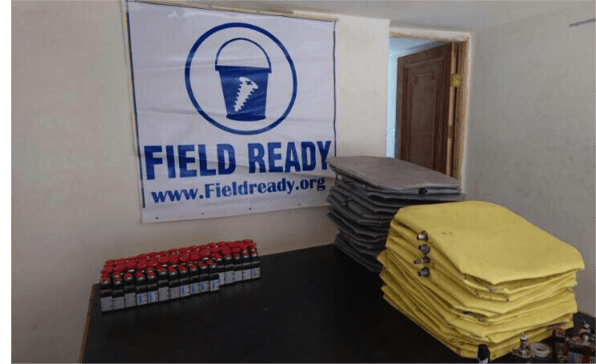
Funding crisis
Although Dotz is frequently on the road visiting Field Ready teams around the world, one of the reasons she’s been traveling nearly nonstop in recent months is that the nonprofit is struggling to raise money for its efforts, particularly those in Syria.
It baffles Dotz, who says she’s talked to numerous people who end up deciding not to donate money despite taking the attitude that, “‘Oh, it’s so terrible in Syria. What can I do?’ Well, here’s something you can do.”
Dotz isn’t sure why she’s been having trouble with fundraising. It could be empathy fatigue, or simply that people who want to help have already given everything they can given the endless numbers of disasters that have hit the world in recent years.
Still, she remains hopeful. “My gut tells me there’s some tech person out there who wants to do something cool,” Dotz says, “but who hasn’t come across the right project.”
Fast Company , Read Full Story
(36)